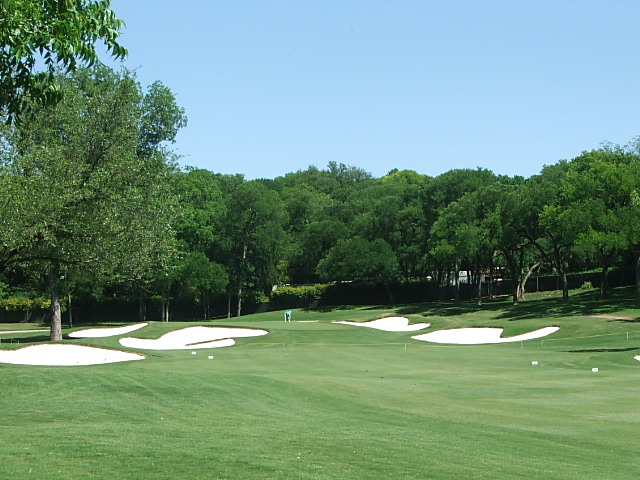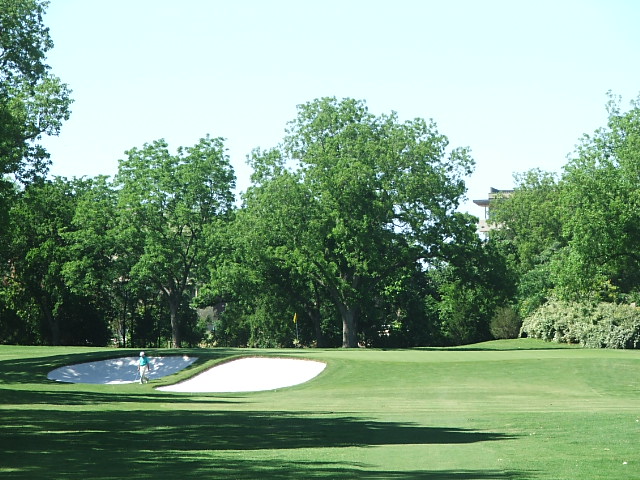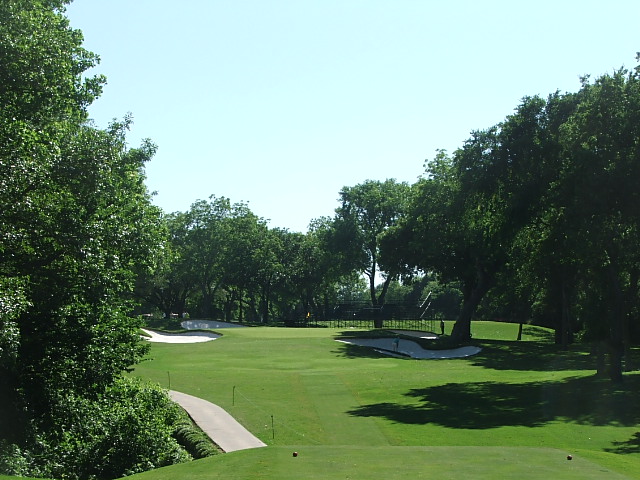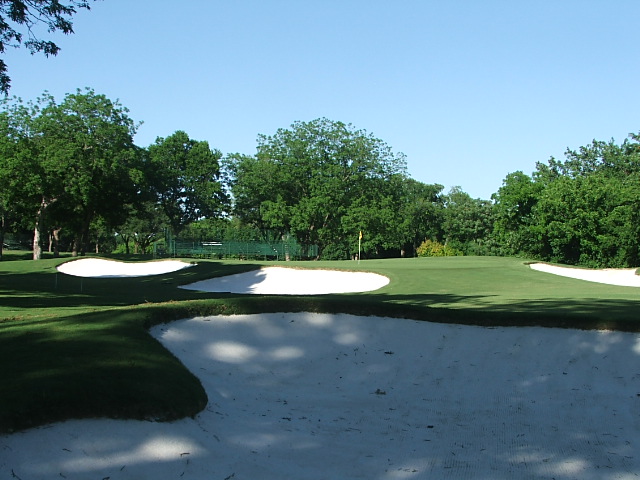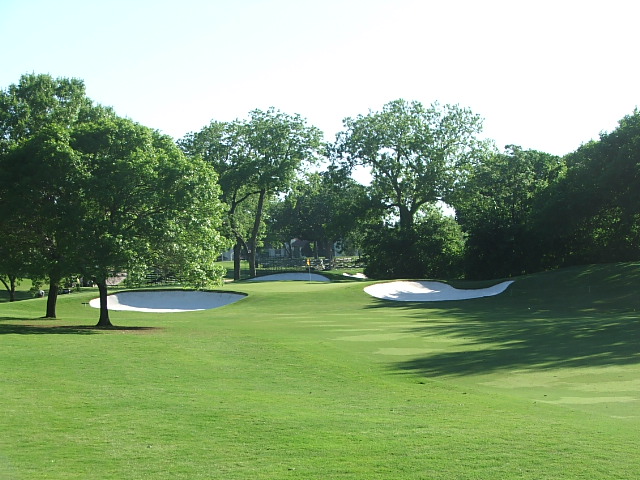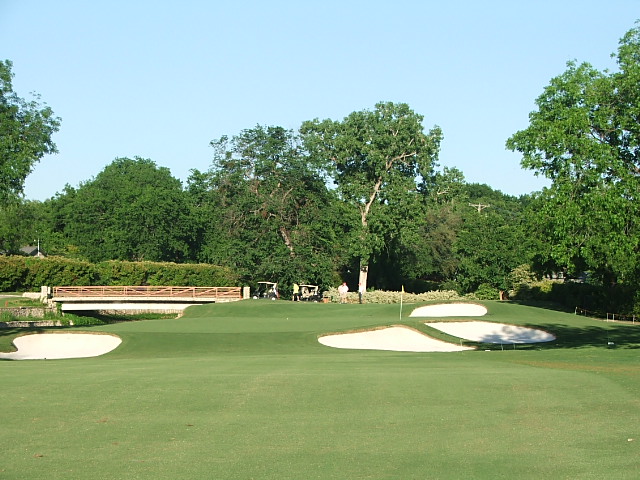Colonial Country Club (ranked #100) is located in Ft. Worth, Texas. It is the only top 100 course ranked in the state. Readers located outside the U.S. may not be familiar with the psyche in The Lone Star State, which is summed up cleanly in their unofficial state motto, "Don't mess with Texas." Texas isn't so much a separate state as it is a state of mind. Ft. Worth has an interesting history as a genuine Western city. If someone walks around Dallas with a big cowboy hat they would be assumed to be a Yankee trying to fit in. In Ft. Worth, the cowboys are real, based on the local cattle industry. Ft. Worth is also a major rail hub, but more about that later. Ft. Worth's city motto is "The West Starts Here," and there is much truth to that. It was previously nicknamed "The Paris of the Plains" due to its freewheeling reputation during the mid 1800's. Ft. Worth had a rowdy saloon district in the latter part of the 19th century, known for its debauchery and crime. It was called "Hell's Half Acre," predating the use of this nickname for the seventh hole at Pine Valley by a good fifty years.
Colonial was built by John Bredemus in 1936, and modifications were made by Perry Maxwell a few years later. Maxwell was the same designer as Prairie Dunes & Southern Hills. The course is famous because it was Ben Hogan's home course during the height of his career.
The Golf Course
Colonial starts out simply enough on flat ground. The first hole is a straight forward dogleg right par five of 555 yards, one of only two on the course. As you can see in the picture below of the first green, the course is well bunkered around the greens. It has possibly the whitest sand I have seen on a golf course. Stepping into the immaculate bunkers can be blinding because they are so white.
It becomes clear pretty quickly at Colonial that the greens are small. Along with Pebble Beach, Harbour Town and Inverness, they are among the smallest of all the courses I have played.
The three hole stretch three through five is known as the "Horrible Horseshoe." Horseshoe, because the third tee is right next to and left of the fifth green, and the three holes swing around in a U shape. Horrible, because they are not easy. The third is a 468 yard par four dogleg left with a slightly elevated green. The fourth is a tricky 220 yard par three, also with an elevated green.
The fifth hole is one of the most renowned in the world. It gets endless accolades. Golf's 100 Toughest Holes includes it on its list. The 500 World's Greatest Golf Holes ranks the fifth among its top 100. Dan Jenkins, in his 1966 book The Best 18 Golf Holes in America, selected the fifth hole as well. It is a 459 yard par four (481 for the pros), dogleg right. As Jenkins describes it: "The drive must be almost perfect, a slight fade and 250 yards out, if you are going to reach it in two. But fade too much, and there is the Trinity waiting. You can bail out to the left but there is a line of trees and a ditch there." The Trinity he is referring to is the Trinity River, which snakes along the outside of the course.
It's a hard hole for sure, but not that hard. As my readers know, I'm not exactly a scratch golfer and I parred the fifth. In fairness, the prevailing left to right wind wasn't blowing when we played; I imagine it's a different hole if the wind is up.
The sixth is a lovely 381 yard par four, dogleg right with another elevated green. For the record, the greens were as well conditioned as I've seen in my travels, so my compliments to the greenskeeping staff. They keep this place immaculate, which, given the heat and humidity down here, they should be commended for.
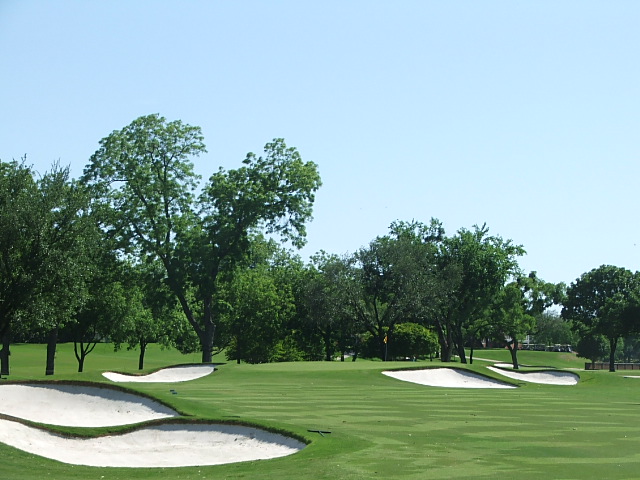
The elevated sixth green from the left side
I must say, though, that walking off the seventh green, I was not terribly impressed with the course. Very pleasant, for sure, but I was thinking to myself, ok, so it's in the top 100 in the world because Ben Hogan was a member. Nothing wrong with that. We should respect the wee ice mon. I'm good with that.
By the time I walked off the eighteenth green, I had a different opinion.
I liked the 169 yard par three eighth hole. It has some wicked bunkers and trees around it, and the green slopes back to front. Starting on this part of the course, there are two dramatic changes. First, there is a lot more change in elevation and terrain; and second, you play alongside the massive adjacent railroad yard. I know, stick to the golf, you fool, who cares about rail yards? Well, in my view it is an integral part of playing at Colonial. I'm not talking about an occasional train that goes by like at Carnoustie or Royal Lytham & St. Annes. We're talking a major working rail yard right next to the course. Serious rolling stock, my friends.
Because of the cattle business and stock yards, Ft. Worth has had railroad yards since 1876, so they have been here a lot longer than the golf course. It's not unusual to be hitting a drive or a putt and hear train cars smacking into each other as they are coupled up. Train whistles toot their horns throughout the round more than Donald Trump when he is on camera.
The tenth was also one of my favorite holes. It is a nice 381 yard dogleg right par four. Your second shot is over a big swale to a well protected green. Like Harbour Town, Colonial is a narrow, shot makers course. You don't need to bomb the ball to score well here. What you need to do is hit around trees and be smart with club selection.
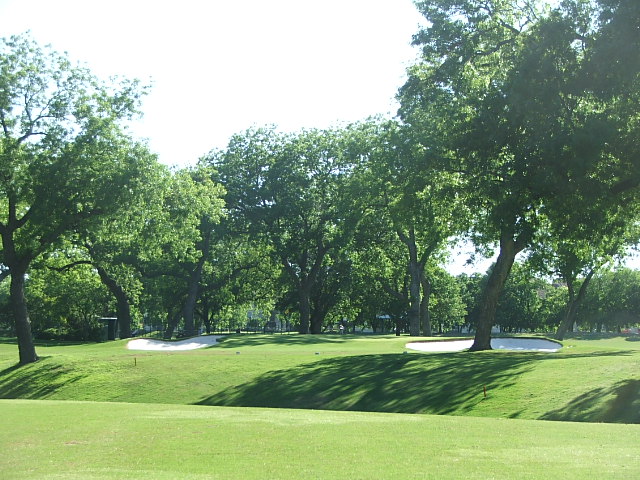
The tenth hole, approach to the green
The eleventh hole is the other par five on the course, and it is Texas-sized at 600 yards from the pro tees. The green is protected extremely well as seen below.
It won't be uncommon to hear high-pitched screeching as you play around this part of the course as metal train wheels brush against the metal tracks as they are continually put together and leave the station. I'm not bringing up the trains to be critical of them. In fact, the course has a perimeter of trees that block out most of the noise. It's not obnoxious, but it is constant background din all day. Just like it would be hard to describe Moray Golf Club in Scotland without talking about the everpresent jets taking off from RAF Lossiemouth, it's hard to talk about Colonial without discussing the bustling rail yard.
The twelfth was also a very good hole, a 400 yard par four dogleg right with a bowl-like fairway. The elevated green is protected by trees and beautiful bunkers. The green is the smallest on the course, which is saying something here, given that they are all small. Where Colonial excels is in its subtle but sneaky-hard use of doglegs. Ben Hogan's assessment of the course describes how the doglegs are used so effectively, "A straight ball will get you in more trouble at Colonial than any course I know."
Fifteen was my favorite hole, another 400 yard par four, this one another dogleg right. Tee shots will kick right-to-left off the sloping terrain. There is a creek that guards the left side of the elevated green, which you approach from the bottom of a hollow.
Sixteen through eighteen are strong finishing holes that I enjoyed. It is a finishing sequence like this that makes Colonial such a good venue for the PGA tour. Seventeen is a 373 yard par four that gets progressively narrower as you approach the green, and you have to hit over a swale in the middle of the fairway. The eighteenth has water left of the green. When Phil Mickelson won the tournament here in 2008, he hit a miracle shot over trees after being completely out of position. When he made the putt for birdie, some drunken fool did a cannonball into the little pond adjacent to the green. He was arrested, but you must agree that it was a rather imaginative move. At least he had the decency not to take his shirt off before he jumped in. The video on YouTube.
Obviously, I liked the back nine better than the front and liked Colonial overall. I almost always walk when I play, but I took a cart at Colonial because, like Shadow Creek, it's just too hot. We were treated with true Texas hospitality by everyone at Colonial including our forecaddy who was a nice young man who always had a mouth full of chewin' tobacca' and called us "y'all" the whole round.
As they say, don't mess with Texas.
 Colonial and the rail yard from the air
Colonial and the rail yard from the air
